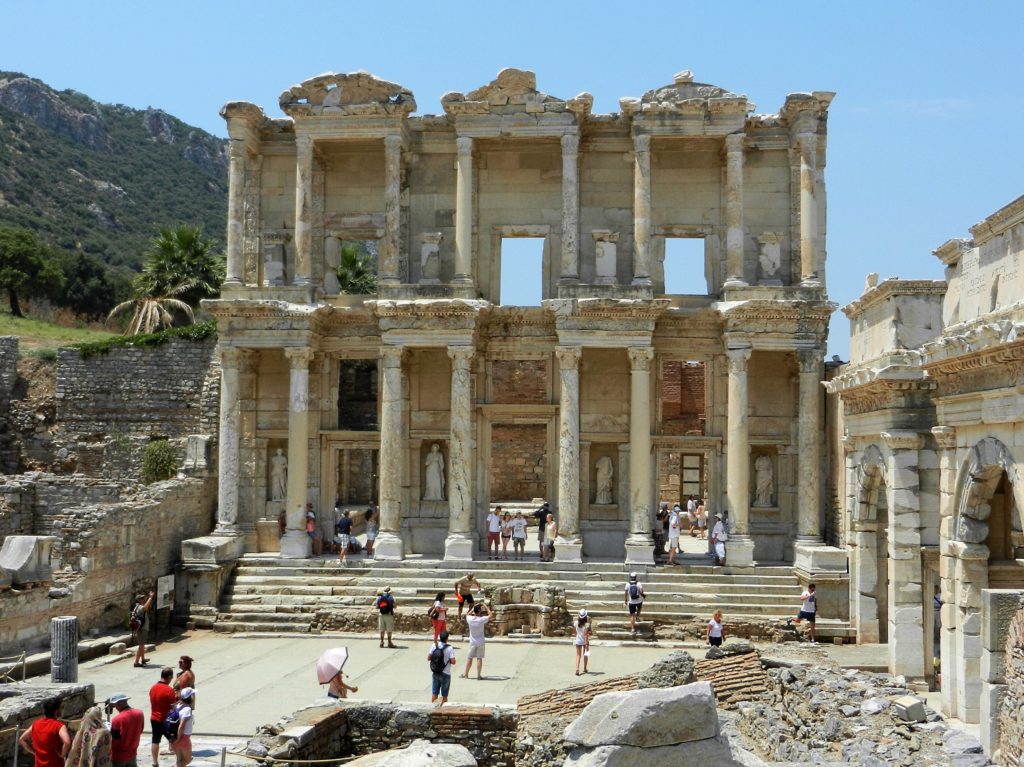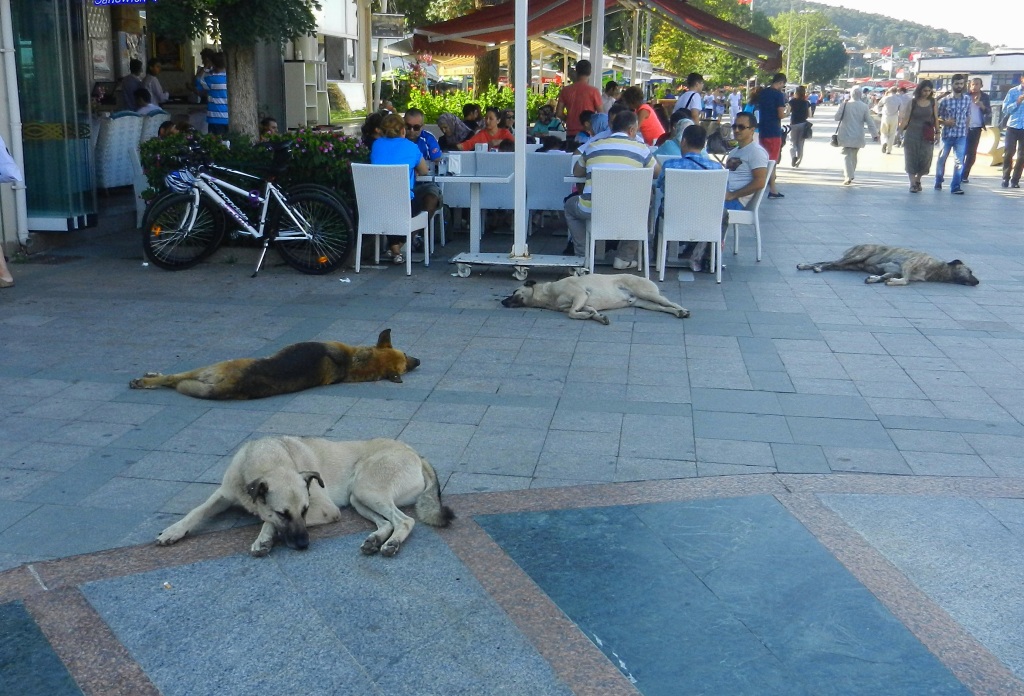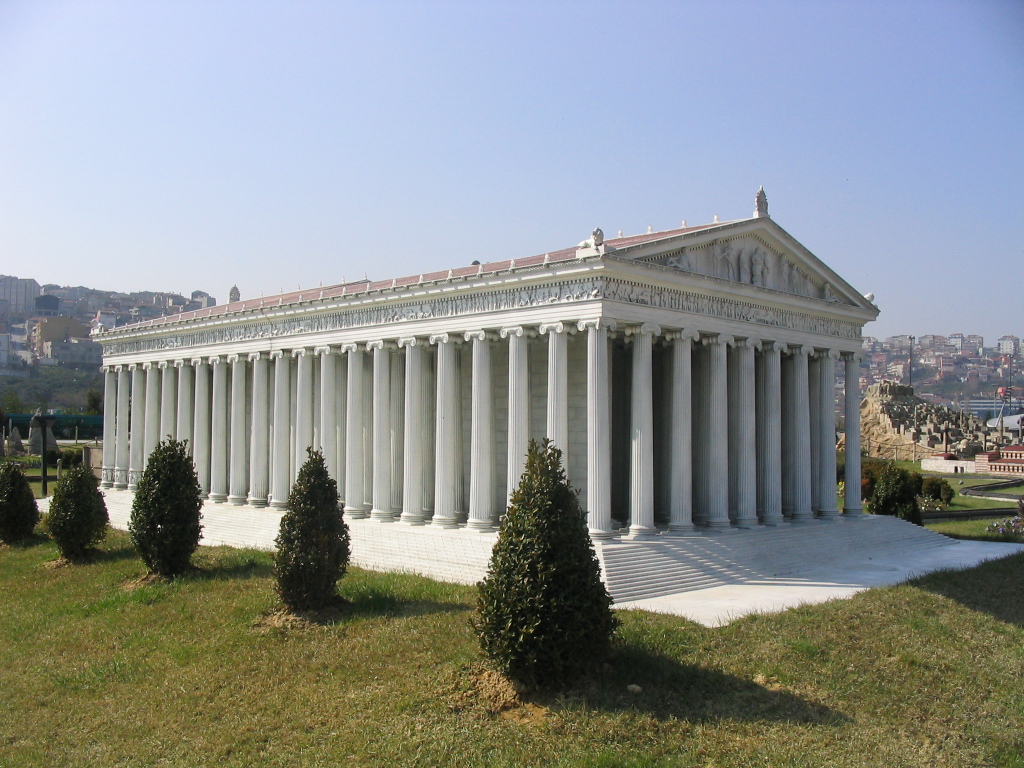
Sometimes more powerful forces than your own direct you down paths you wouldn’t otherwise go, and our plans always seem to change. This time, the great forces of “cheap airline tickets” directed us to Izmir in Turkey. Apparently many Finlanders travel there during their summer holidays to get a bit closer to the sun and work on their non-existent tans, thus there were many different airlines offering thrifty flights to Turkey. Climbing on-board the Sun Express, we set off on our own holiday towards a whole new world under the blazing sun.
Izmir
We experienced a few minor shocks in the city of Izmir. Back in Finland the temperatures were less than mild, so when we first stepped off the plane we were surprised by the inferno that was Turkey’s climate, a fever that was pleasant at first, but soon we were diving into air-conditioned stores at every opportunity. Another shock was the incredibly energy of our surroundings: the people, cars, stray cats and dogs that swarmed around us like an angry nest of wasps. Street sellers’ wares covered every spare inch of sidewalk, and old men leered at us from under the canopies of the many tea shops and coffee houses. We were immediately recognized as tourists and were aggressively targeted as customers for any restaurant or store we happened to wander by.

We had only a few days in Izmir and a vague idea of where we were going next: NORTH-ISH, along the Aegean coast. We had no idea what we were going to do in the meantime but were soon delighted to discover that the ancient city of Ephesus was merely an hour away. Packing up for the day, we moved out!
Ephesus
Ephesus began as an ancient Greek city on the coast of Iona, and when I say ancient, I’m talking almost 3000 years ago! The founder of the city was a prince of Athens named Androklos, who was forced to leave his country after the death of his father, King Kadros. In his despair, it is said that Androklos visited the Oracle of Delphi to seek guidance. The Oracle prophesied that he would establish a great city at a place which would be shown by fish and a boar. Androklos and his friends eventually came to the region of Ephesus and stopped for dinner. The fish they were frying suddenly jumped off the pan, scattering flames that set the dry bushes around them on fire. A boar ran out of the burning bushes and Androklos chased the beast, caught it, and killed it. Convinced that the prophesy of the oracle had come true, Androklos and his friends established their new city in this location. Following subsequent invasions of the Cimmerians, Persians, and Alexander the Great, in 129 BC the Roman Republic took over and the city really started to flourish. With a population of 56 000 Ephesus was the third largest city in the Eastern Roman Empire. In the year 262 AD , however, Ephesus was attacked and destroyed by the Goths. After this, it never regained its previous importance, but the ruins left behind today are marvellous.
It was an exploration that took us at least five hours, the city of Ephesus and the surrounding monuments were too interesting to hurry by. At the gates of the time-worn city there were lines of stalls selling souveniers, clothing, and food at exorbitant prices. We quickly scurried through that mess, trying to avoid eye contact, but not before Ashleigh was sucked into a shop selling white dresses. Who WOULDN’T need a white dress? They were too expensive, but before we could leave the store owner dropped the price five times and continued to do so until we panicked and ran away. Money just shouldn’t work like that! We realized we might have to get used this bartering system if we’re ever to make through this strange land.
Within the Greek/Roman ruins we were astonished by the vast amount of marble carvings, sculptures, and columns. Ephesus was an incredible outdoor museum where one could walk around freely and even touch the artefacts (though you shouldn’t do that!). Some of my favourite sites were the Ampitheatre, the Library of Celsus, the Marble Road, and the beautiful mosaics in the Terrace Houses.
Grotto of the Seven Sleepers
At the edge of heat stroke Ashleigh and I took a short hike to the Grotto of the Seven Sleepers, a mysterious cave on the slopes of Mount Pion that is shrouded in legend. As the story goes, the cave was once a hideout for seven young, Christian men who tried to escape religious persecution from the the Roman Emperor Decius, around 250 AD. Having discovered the Christians there, Emperor Decius had them sealed within the cave and left to die. 200 years later a landowner decided to open up the cave to use as a cattle pen and was shocked to find seven men asleep, alive and well. The Seven Sleepers had awoken during the reign of Emperor Theodosius II when the state religion of the Roman Empire was Christianity, and everyone praised God for the miracle. The cave in which the seven slept became a sacred place and was turned into catacombs for Christian burials.

After exploring these ancient catacombs Ashleigh and I hiked back down the mountain and stopped at an outdoor restaurant under the shade of a gigantic tree to drink 3 litres of water, have some kebab, and cool off.
Temple of Artemis
Our last stop before returning to Izmir had to be the site of one of the Seven Wonders of the Ancient World: The Temple of Artemis. The Artemision was a colossal Greek temple dedicated to the hunter-goddess Artemis, constructed just outside Ephesus. It was first built in 550 BC but in 356 BC, not long after its completion, the temple was destroyed in a vainglorious act of arson by Herostratus, seeking fame at any cost. For this outrage, the Ephesians sentenced Herostratus to death and forbade anyone from mentioning his name (though obviously the word got out). The Temple of Artemis was rebuilt in 323 BC out of pure marble and much larger than the first, stretching 450 feet long and 225 feet wide, with 127 columns that stood 60 feet high in double rows forming a wide ceremonial passage. Antipater of Sidon, who compiled the list of the Seven Wonders, describes the finished temple:
“I have set eyes on the wall of lofty Babylon on which is a road for chariots, and the statue of Zeus by the Alpheus, and the hanging gardens, and the colossus of the Sun, and the huge labour of the high pyramids, and the vast tomb of Mausolus; but when I saw the house of Artemis that mounted to the clouds, those other marvels lost their brilliancy, and I said, “Lo, apart from Olympus, the Sun never looked on aught so grand”

Surviving 600 years the temple was destroyed again in a raid by the Goths, and eventually most of the stones were reused in construction of other buildings. Today, all that remains on the site of this Wonder is a single standing column in a swamp surrounded by chunks of leftover rubble.
Despite the absence of its greatness I wandered around the site of the Artemision for a while, imagining its massive structure encompassing me, its intricate carvings and statues surrounding me, and I enjoyed every minute of it. As I sat upon one unidentified, aged stone a large bus full of tourists pulled up and the sheep flocked briefly to the edge of the site. After a few seconds of noticing nothing picture-worthy they quickly piled back into the bus and drove off. I think they missed out on something. A few bits of stone and our memories are all that’s left of these once great civilizations and if you can just spare a moment to imagine the grandeur of what was, you can bring dead ruins to life again.




